The Real-Life Battle Behind the Brutal Vietnam War Movie, ‘Hamburger Hill’
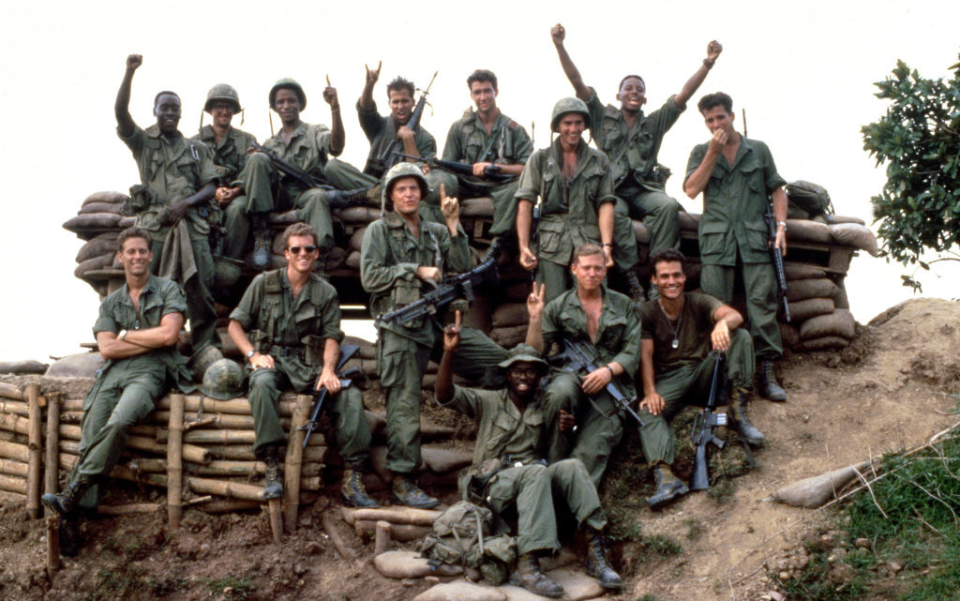
Some of the best war movies are based on real-life events – stories that are so fantastical that they’re almost unbelievable, such as Hacksaw Ridge (2016) and Good Morning Vietnam (1987). This is also true of Hamburger Hill (1987), titled after the bloody Vietnam War battle. Although based on a true story, Hollywood always omits certain events and incidents. Discover what really happened in 1969 at Hamburger Hill.
Hamburger Hill (1987)
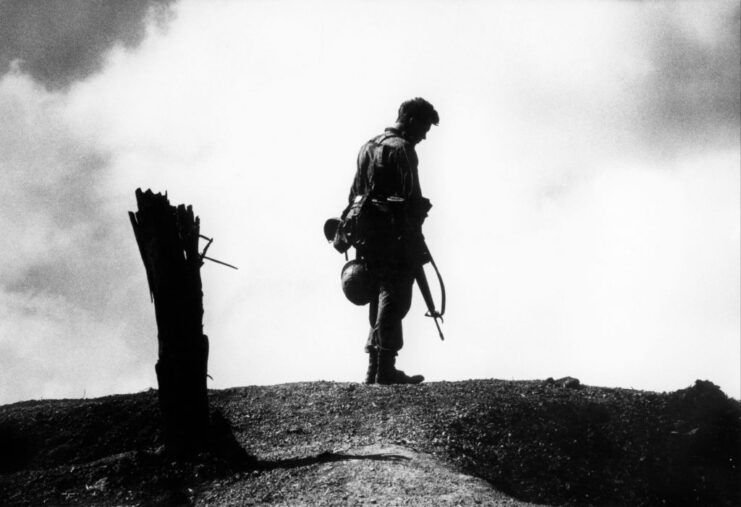
Written by James Carabatsos and directed by John Irvin, Hamburger Hill follows the actions of the 3rd Battalion, 187th Infantry Regiment, 101st Airborne Division and five new recruits. These “Screaming Eagles” are given a crash course on everything from fighting to hygiene before being thrust into an assault against Hill 937, which would grow to become the Battle of Hamburger Hill.
The men are up against fierce enemy fire as they try repeatedly to take the area from the North Vietnamese, who have control of it. While they never give up, they do suffer heavy casualties, and only three of them – Staff Sgt. Adam Frantz, Pvt. Joseph Beletsky and Pvt. Elliott “Johnny” Washburn – reach the summit as the screen fades to black.
Hamburger Hill was well-received upon its release. However, while it earned praise from the majority of audiences, some have criticized the movie for its narrow focus on a single unit, without including a broader war context.
Operation Apache Snow
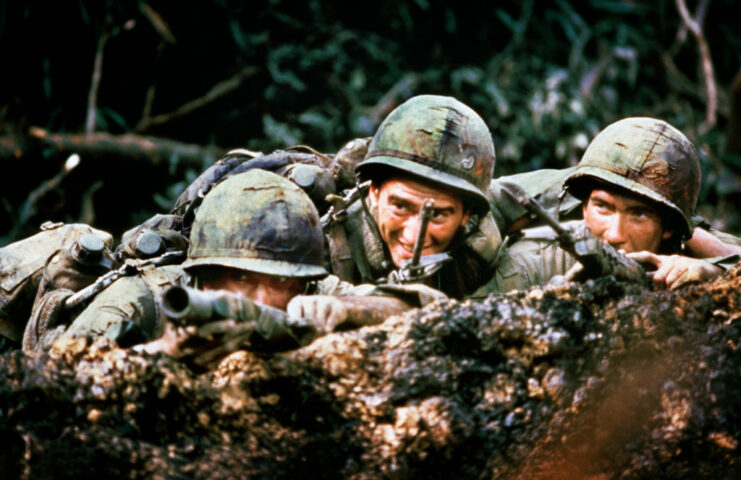
The real-life Battle of Hamburger Hill was just a small part of Operation Apache Snow. It was designed to pressure the North Vietnamese Army (NVA) and Viet Cong in the A Sầu Valley and prevent them from moving supplies from Laos.
The assault began on May 10, 1969, with troops from the 101st Airborne’s 187th, 501st and 506th Infantry Regiments, under the leadership of Gen. Melvin Zais; the 9th Marine Regiment; the 3rd Battalion, 5th Cavalry Regiment; and the 1st Division of the Army of the Republic of Vietnam.
The 3rd Battalion, 187th Infantry were commanded by Lt. Col. Weldon Honeycutt, while the 2nd Battalion, 501st Infantry were led by Lt. Col. Robert German. The 1st Battalion, 506th Infantry were commanded by Lt. Col. John Bowers.
“Screaming Eagles”
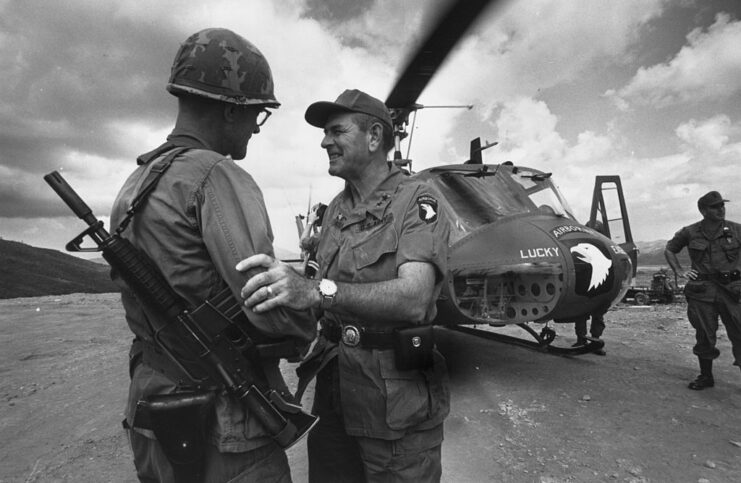
True to Hamburger Hill, it was the paratroopers of the 187th who made up the bulk of the battle force and also took the brunt of the casualties. When Operation Apache Snow was launched, the Americans led a valiant attack, but the North Vietnamese 29th Regiment took the high ground. They moved to a pre-established bunker on Dong Ap Bia, known to the Americans as Hill 937.
Strangely enough, the area had little-to-no tactical significance, yet the commanding officers continued to lead assaults against it. The three ordered a series of attacks against the NVA position. Initially, the 187th were supposed to take the hill in a matter of hours, but the enemy counteroffensive was too strong. After their original attack was repulsed, they regrouped before launching a secondary attack.
Battle of Hamburger Hill
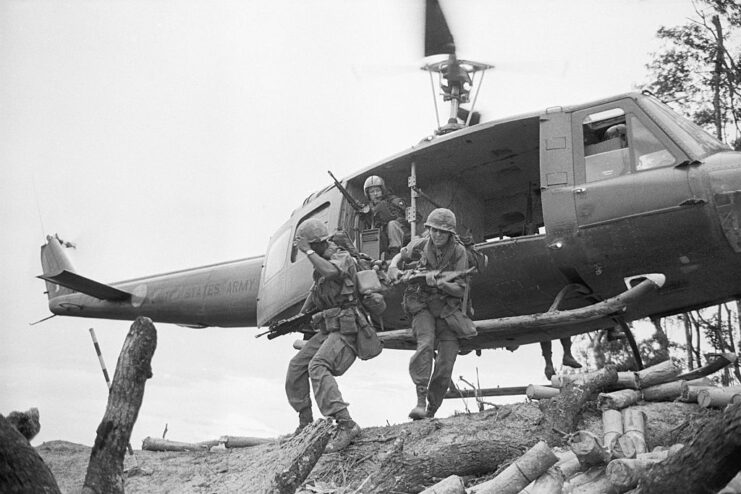
Along with the 101st Airborne and support troops trying to take Hill 937, the position was bombarded by artillery and airstrikes. Reports later said it soon looked like the battlefields of World War I, as the US Army dropped thirty-one thousand 20 mm shells, 513 tons of tear gas, 142 tons of napalm and 1,000 bombs. This had little-to-no effect on the enemy troops, who were still able to push back the Americans, even when they had to fight against them during torrential tropical rains.
The Americans also had to deal with the dense jungle, which made it near impossible from them to gather reconnaissance. Much of their information came from captured troops, who rarely revealed anything accurate about the size of the enemy forces or where they were dug in.
This was all compounded by the fact that many of the men didn’t know they were supposed to be taking the hill.
An un-victorious victory
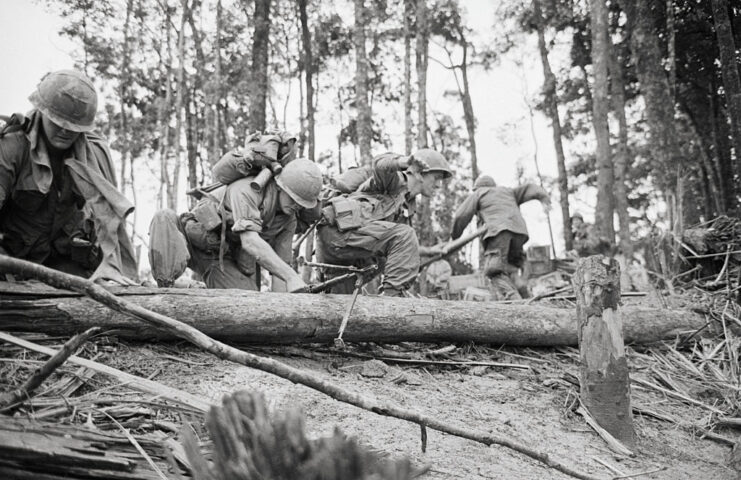
Finally, on May 20, 1969, Gen. Zais deployed further reinforcements for the men on Hill 937, including several South Vietnamese battalions; the 1st Battalion, 506th Parachute Infantry Regiment; and the 2nd Battalion, 501st Parachute Infantry Regiment. As it turns out, this was the push they needed, whether as a morale boost or just added numbers, as they were able to capture the summit and force an enemy retreat
Much like in Hamburger Hill, it took 11 assaults on the North Vietnamese position before the Americans were able to capture Hill 937. Also similar to the movie, the 3rd Battalion, 187th Infantry led many of them. Overall, the film is considered to be extremely accurate, with some veterans going so far as to say it’s more authentic than more-popular films from the same time period, such as Platoon (1986) and Full Metal Jacket (1987).
The controversial legacy of the Battle of Hamburger Hill
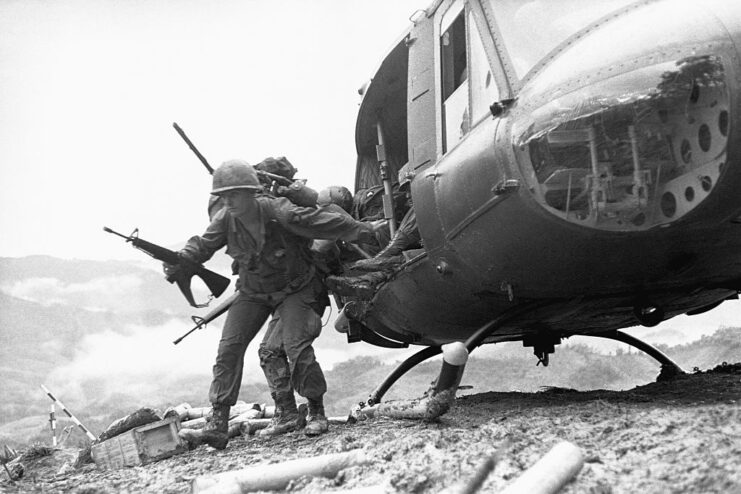
Given the intensity of the fighting, the Battle of Hamburger Hill was heavily covered by journalists, who spread its nickname. When asked in an interview what the fighting was like, Sgt. James Spears replied, “Have you ever been inside a hamburger machine? We just got cut to pieces by extremely accurate machinegun fire.” This, compounded by a nod to the bloody Battle of Pork Chop Hill during the Korean War, gave the fight its now-infamous moniker
Although Hamburger Hill is incredibly accurate, what isn’t shown is that the Americans ended up abandoning the position only a few days later. This decision contributed to the battle’s controversial legacy, mainly because of the high casualty rate during the operation. American sources claim there were only 72 men killed and 372 wounded, but NVA numbers heavily dispute this. They claim there were a total of 1,500 US and South Vietnamese troops killed and wounded.
